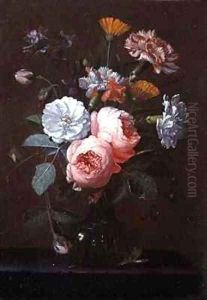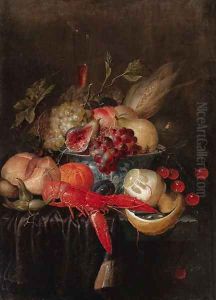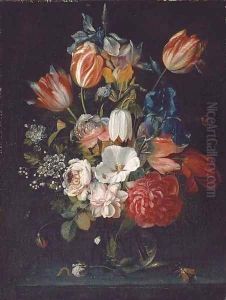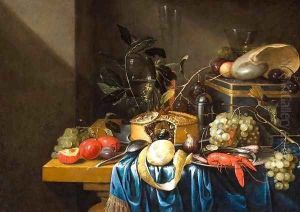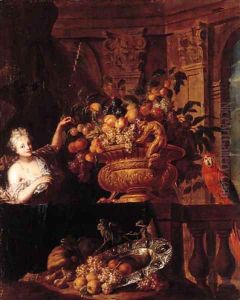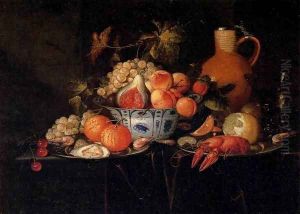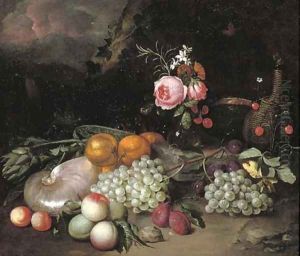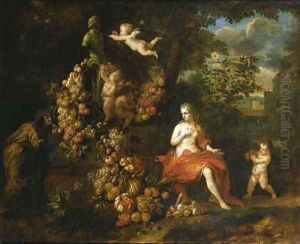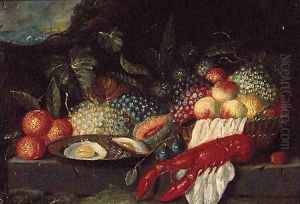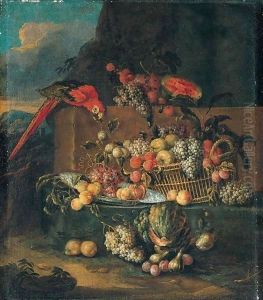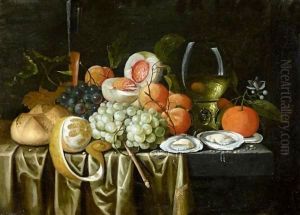Jan Pauwel II the Younger Gillemans Paintings
Jan Pauwel II the Younger Gillemans was a notable Flemish painter, primarily recognized for his exquisite still-life compositions. Born in Antwerp in 1651 into a family with a strong artistic heritage, his father, Jan Pauwel Gillemans the Elder, was also a celebrated still-life artist. This familial background provided Jan Pauwel II with an environment rich in artistic tradition and expertise, naturally leading him into the path of becoming a painter himself.
From a young age, Gillemans displayed a remarkable aptitude for art, particularly in the realm of still-life painting, a genre that was highly popular and appreciated in the Flemish regions during the 17th century. His early works are characterized by their meticulous attention to detail, vibrant colors, and the ability to capture the texture and materiality of the objects he painted. These qualities quickly established him as a prominent figure within the local art community.
Throughout his career, Gillemans continued to refine his style and technique. He became well-known for his ability to imbue inanimate objects with a sense of life and vibrancy, making his compositions stand out for their realism and depth. His still-lifes often included a variety of subjects, from fruits and flowers to game and household items, all rendered with exceptional skill and precision.
Despite the prominence of his father, Jan Pauwel II managed to carve out his own distinct identity in the art world. His works were sought after by collectors and patrons, and he enjoyed a successful career. However, like many artists of his time, much of his life's details remain obscure, and his works, while appreciated, did not always receive the historical recognition they deserved during his lifetime.
Jan Pauwel II the Younger Gillemans passed away in 1704, leaving behind a legacy that has since been reassessed and celebrated in the context of Flemish still-life painting. Today, his paintings can be found in various collections and museums, admired for their beauty and technical mastery. His contribution to the Flemish art scene of the 17th century remains significant, as he continued the tradition of still-life painting with great skill and innovation.
